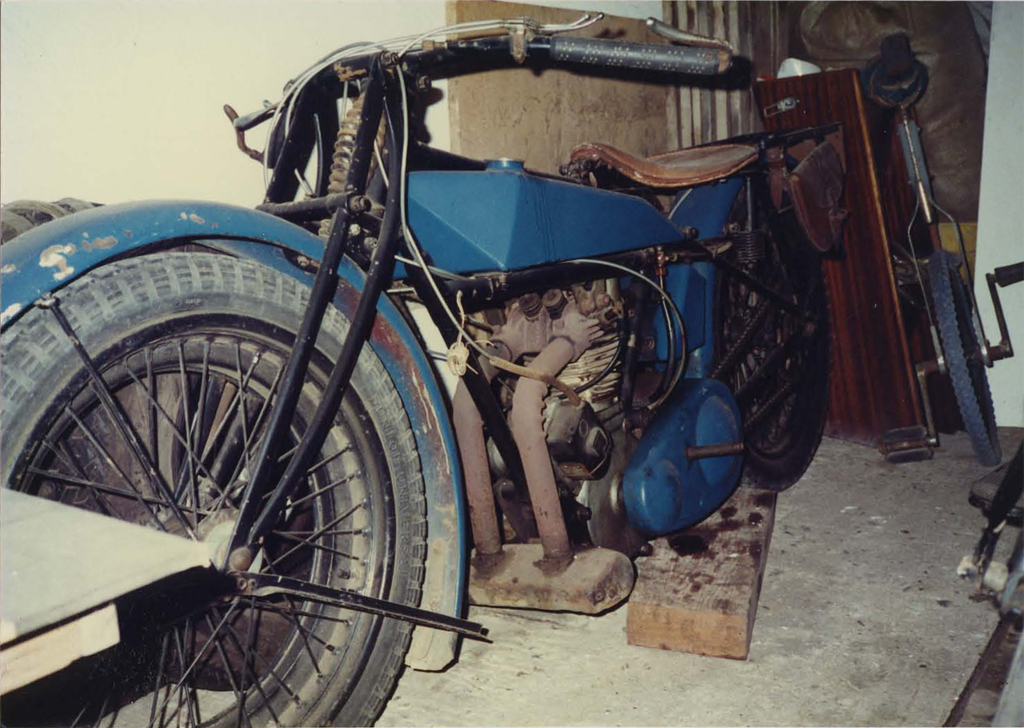1986. Earthquakes at Viña del Mar.

 In 1986 Uwe visited the Chilean holiday paradise Viña del Mar. The Lloret de Mar of the Humboldt Current was also the summer resort of the Pinochet Clan at that time. This didn’t bother Uwe much. What did bother him, though, was one of the severest earthquakes of all times, which was afflicting Chile while they were there. His hotel started dancing in the middle of the night. After they had made it to get outside, they watched how another hotel down the street slid down the hill and disappeared into the floods of Pacific Ocean. However, this kind of nature’s capers could not dissuade Uwe from his original plan – someone had told him that somebody near Viña had two old motorbikes to sell.
In 1986 Uwe visited the Chilean holiday paradise Viña del Mar. The Lloret de Mar of the Humboldt Current was also the summer resort of the Pinochet Clan at that time. This didn’t bother Uwe much. What did bother him, though, was one of the severest earthquakes of all times, which was afflicting Chile while they were there. His hotel started dancing in the middle of the night. After they had made it to get outside, they watched how another hotel down the street slid down the hill and disappeared into the floods of Pacific Ocean. However, this kind of nature’s capers could not dissuade Uwe from his original plan – someone had told him that somebody near Viña had two old motorbikes to sell.
Half of Viña was severely affected by the earthquake and people lingered in the streets and open spaces, as they feared aftershocks. Uwe paved his way through the chaos looking for the right address. Finally, they arrived at a little garage in an area that was not as affected by the earthquake. The seller was already waiting at the open gate. Behind him Uwe could spot the two true gems, both coated in the same shade of blue. A Rudge from the late 20′s and an Indian Chief from the early 40′s. Rudge-Whitworth was a reference in motorsports in the late 20′s. The uncovered heads of the bikes made it easy to date them quite precisely. The English forge, with bikers like Graham Walker, Ernie Nott, and Henry Tyrell-Smith, dominated the European racing community at that time with several victories at the Tourist Trophy and numerous other races. Rudge was the first manufacturer to use 4-valve technology in series motorbikes, or to build cone shaped combustion chambers, and with that he was far ahead of his competitors. Rudge was also successful with track races and dirt-track and the old bikes from Coventry are still used today by circus artists in their “Globes of Speed”, who appreciate the bikes for their quiet running. The Indian Chief used to be a military bike in World War II, built in 1942 or 1943. When the war was over, Harleys and Indians, which used to be military equipment, flooded the market and were very cheap. An indication for the military version was the simpler and cheaper leaf spring suspension fork. The models for the public already had the grider parallelogram forks at that time. Except for the colour, the bikes were still in good original condition. The owner asked for 1500 dollars for both bikes together. Uwe almost forgot to bargain. He did eventually, but almost a little half-heartedly, as we really struck gold with this find and he would have paid twice as much, if he had to.


